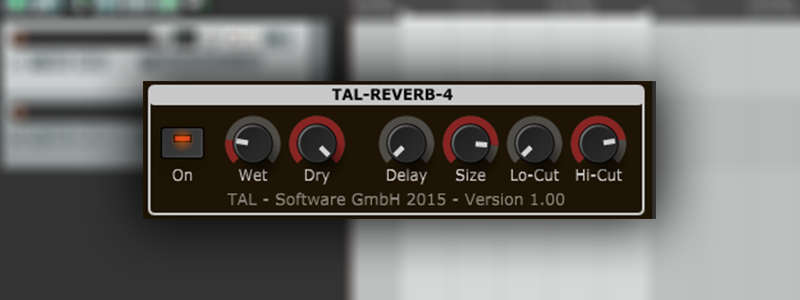How To Open Vst Plugins In Podium
The installation will create a sub-folder in the c: program files (x86) sketchup sketchup 2013 plugins folder called SUPodiumV2. There will also be a ruby load file in the plugins folder called SUPodiumV2.rbs. In addition, SUPodiumBrowser.rbs file is installed. Manually deleting these folders and files will effectively uninstall SU. In this video we will be learning how to install and manage VST plugins in Cakewalk by Bandlab.Common VST File Locations: VST2 C: Program Files VSTPlug.
- How To Open Vst Plugins In Podium Windows 10
- How To Open Vst Plugins In Podium Free
- How To Open Vst Plugins In Podium Mic
When it comes to audio effects, most modern non-linear video editors allow you to use plug-ins developed by third parties to extend their native audio effects. You might want for example to de-noise audio, process its dynamics or transition between different segments using reverb or delay. Plug-ins, as the name implies, are pieces of software that can run inside other programs but in order to do so they have to be distributed in a specific format that is supported by the host application.
The two most popular plug-in formats are:
- VST (Mac and Windows) - Stands for Virtual Studio Technology and was developed by Steinberg. They are bundled as .vst files and they usually live in C:Program FilesSteinbergVSTPlugins (Windows) or /Library/Audio/Plug-Ins/VST (Mac)
- AU (Mac only) - Apple’s equivalent to VSTs. They are bundled as .component files and their default installation path is /Library/Audio/Plug-Ins/Components
Adobe Premiere Pro
Premiere Pro supports third party VST (and AU on Mac) plug-in effects that are available in both the Audio Mixer and the Effect Controls panel. Initially however they may not be activated so you have to go into Preferences > Audio and click on the Audio Plug-In Manager button. From there, make sure it’s pointed correctly at your plug-in folders and press Scan for Plug-Ins.
The locations where Premiere Pro searches for VST plug-ins are as follows.
- HKEY_LOCAL_MACHINESoftwareVSTVSTPluginsPath (Windows)
- C:Program FilesSteinbergVSTPlugins (Windows)
- System HD/Library/Audio/Plug-ins/VST (Mac OS)
- System HD/<user>/Library/Audio/Plug-Ins/VST (Mac OS)
If these paths are not present by default you can press add on the plug-in manager window and add a custom location or point Premiere at the correct location.
You can manage your effects and VST instruments in the Plug-in Manager window.
To open the Plug-in Manager window, select Devices > Plug-in Manager.
The Plug-in Manager window shows the following:
This tab lists all VST effects that are loaded in Cubase. You can sort the list by name, vendor, category, etc. by clicking the corresponding column heading.
This tab lists all VST instruments that are loaded in Cubase. You can sort the list by name, vendor, category, etc. by clicking the corresponding column heading.
How To Open Vst Plugins In Podium Windows 10
This tab lists all VST effects and VST instruments that are installed on your system but not loaded in Cubase. These plug-ins might lead to stability problems or even cause the program to crash. As Cubase does not support 32-bit, all 32-bit plug-ins are shown in this list.
NoteYou can reactivate a blacklisted 64-bit plug-in by selecting it and clicking Reactivate. This causes Cubase to rescan the plug-in and remove it from the blacklist. To move the plug-in back to the blacklist, you must rescan all plug-ins and restart Cubase.
By default, the window section to the right shows the Default collection, which contains all effects or VST instruments loaded by the program. The Default collection cannot be changed.
You can compile your own collections of effects or VST instruments by clicking New Collection and dragging and dropping items from the list of all effects or VST instruments to the collection list.
Collections are shown in the selectors for effects/VST instruments, and all changes made to collections in the Plug-in Manager are immediately reflected in the selectors.
Enter the name of a plug-in in the search field. The list of all effects or VST instruments is filtered to show only those plug-ins whose names contain the text that you entered.
How To Open Vst Plugins In Podium Free
Allows you to filter the lists of all effects or VST instruments to show either all loaded plug-ins, or only those that are not part of the current collection.
Allows you to create a new folder in the current collection.
Allows you to delete the selected item in the current collection.
Allows you to create a new collection.


To create a new, empty list, select Empty. To create a new collection based on the list of all effect, select Add All Plug-ins. To create a new collection based on the current collection, select Add Current Collection.
Allows you to select a different collection, and to rename or delete the current collection.
To remove unavailable plug-ins from all collections, select Remove Unavailable Plug-ins from All Collections.
How To Open Vst Plugins In Podium Mic
Opens a section at the bottom of the window in which more information about the selected item is shown. If you select several plug-ins, the information for the plug-in that you have selected first is shown. In this section, you can also deactivate selected plug-ins. Deactivated plug-ins are no longer available in collections. This is useful if you have plug-ins installed that you do not want to use in Cubase.
Opens a section at the bottom of the window in which all current paths to VST 2 plug-ins are listed. You can add or remove folder locations by using the corresponding buttons. Click Rescan All to rescan your computer for plug-ins.